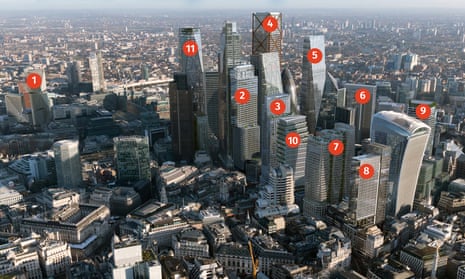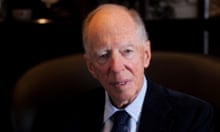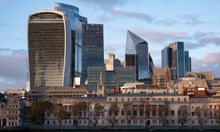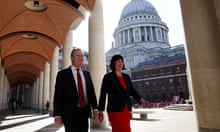Demand for office space continues to rise in the City of London despite the shift to hybrid working, with a mock-up revealing how the capital’s financial district will look in 2030 with 11 extra towers due to be built.
The image shows all of the big developments that are under construction, have been approved or resolved to be approved over the past year, a period in which the number of planning applications received and decided rose 25% compared with the previous 12 months.
The number of people working in the Square Mile rose by 29,000 in 2021-22, according to Office for National Statistics figures released this week, taking the total to 615,000.
The City of London Corporation said this increase had offset the impact of working from home, which led some firms to scale back their office space since the Covid-19 outbreak in 2020.
The corporation is negotiating development proposals that would provide more than 500,000 sq metres of office space. A further 500,000 sq metres of space is under construction.
The tallest tower in the City is 22 Bishopsgate at 278 metres, probably the largest office building ever built in Britain. It opened in 2021 with its own signature scent and a free viewing gallery, and replaced a project known as the Pinnacle or Helter Skelter.
By 2030, it is expected to be overtaken by 1 Undershaft. The architect Eric Parry’s redesign of three stacked buildings with terraces would make the project as high as the Shard on the other side of the Thames, the tallest building in London, at nearly 310 metres.
Planning applications for new buildings rose to 1,023 in the year to September from 820 the previous year.
Shravan Joshi, the chair of the planning and transportation committee at the corporation, said there was room to build further towers to the east of the current cluster, and around Fleet Street, beyond 2030.
“When you look at the macroeconomic picture, it doesn’t look too rosy, does it?” he said. “We’ve got a very young worker population in the City. Over 50% of our workers are under the age of 30. These are people that want mentoring, they want to be back in the office, they are doing shifts and apprenticeships.”
Many financial and technology firms, such as HSBC and Britain’s biggest insurer, Aviva, now insist their staff spend most of their working week in the office.
The number of people travelling to the City, measured by Transport for London tap-ins, has recovered to 85% of pre-Covid levels across the week. On weekdays, worker and visitor numbers are back to 65-70%, while at the weekends the area is busier than it was before the pandemic.
While finance still dominates the Square Mile, there has been an influx of tech firms. Apple is renting office space across several floors at 22 Bishopsgate. TikTok has based its UK headquarters at the Kaleidoscope building next to Smithfield market and is taking more space in Farringdon.
The technology sector recorded the biggest job growth in the City last year, followed by professional services – legal, accounting and management consulting. Financial services jobs dropped by 8% to 195,000, falling back to 2020 levels.
Joshi said the City’s working population had changed from mainly “people in suits” five years ago to“people in T-shirts and trainers”. He added: “Tech is probably the biggest uptaker of tenancy that we’ve got in the City this year.”
City jobs are expected to grow by a further 85,000 in the years to 2040. A report from the engineering consultants Arup and the property group Knight Frank shows a need of 1.2m sq metres of extra office space to accommodate this job growth.
Some big companies such as HSBC and the law firm Clifford Chance have announced they will move back to the City from Canary Wharf, the rival financial district in the Docklands further to the east, when their leases expire.









